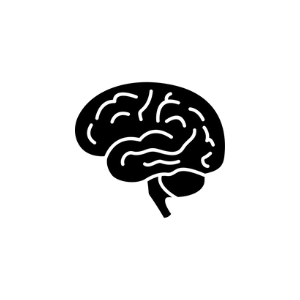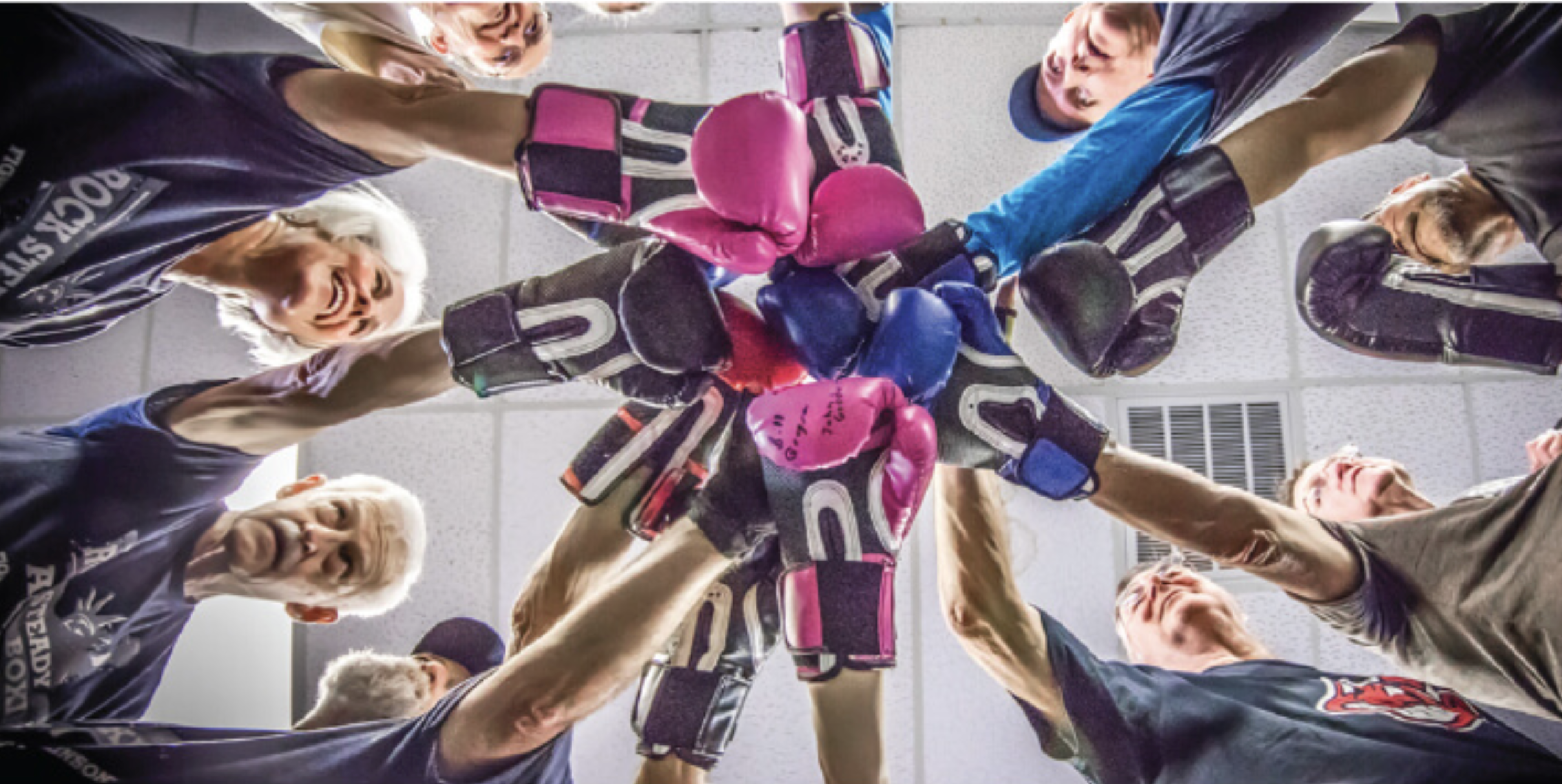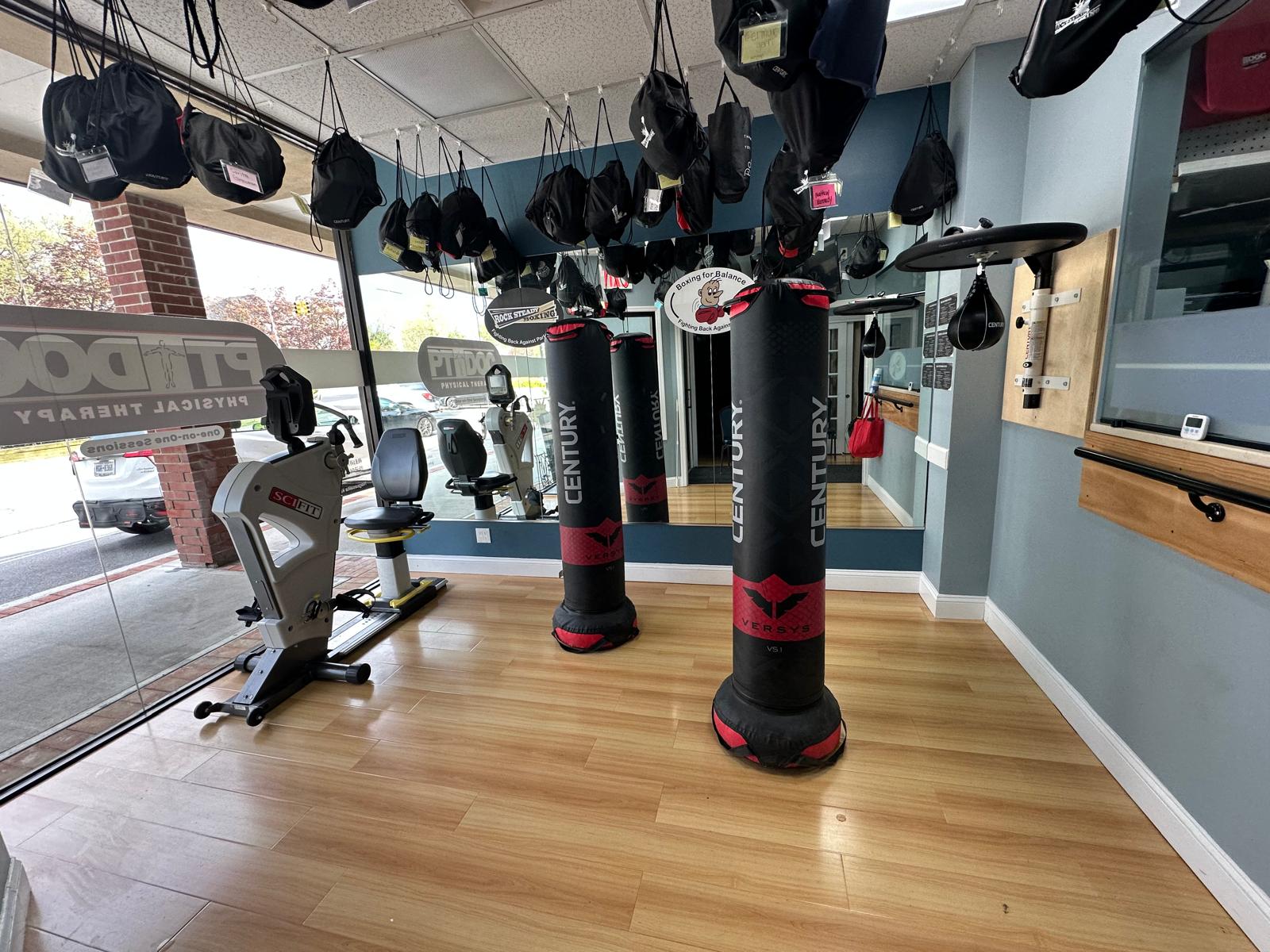
Parkinson's Disease
Our extensive Parkinson’s Program is a one-of-a-kind in the region. All physical & occupational therapists are certified in Rock Steady Boxing training techniques. Several of our therapists are also certified LSVT Big movement certified. We “hold no punches” when training our Parkinson’s patients to reach better levels of mobility, strength, and independence.

ROCK STEADY BOXING
We are learning every day that there are ways in which people with Parkinson’s Disease can enhance their daily quality of life and even build impressive power, strength, flexibility and speed! By exercising with coaches who know the ropes, you can fight your way out of the corner and start to feel and function better. Non-contact boxing, also called shadow boxing, works by moving your body in all planes of motion while continuously changing the routine as you progress through the workout. These one-on-one sessions have proven that anyone, at any level of Parkinson’s, can actually lessen their symptoms and lead a healthier/happier life. We run all Boxing One-on-One sessions here at the PT DOC Physical Therapy clinic in Bayside, Queens, NY. We are located in the Bay Terrace Shopping Center where we have plenty of parking.
LVST Big
LSVT BIG trains people with Parkinson disease (PD) to use their body more normally. People living with PD or other neurological conditions often move differently, with gestures and actions that become smaller and slower. They may have trouble with getting around, getting dressed and with other activities of daily living. LSVT BIG effectively trains improved movements for any activity, whether “small motor” tasks like buttoning a shirt or “large motor” tasks like getting up from sofa or chair or maintaining balance while walking. The treatment improves walking, self-care and other tasks by helping people “recalibrate” how they perceive their movements with what others actually see. It also teaches them how and when to apply extra effort to produce bigger motions – more like the movements of everyone around them.
The Rock Steady Boxing & LSVT sessions are covered by medical insurance here at our clinic because we are a rehabilitation facility.

To learn more or to schedule an appointment call us at 718-747-2019.
ABOUT ROCK STEADY BOXING QUEENS, NY
We are learning every day that there are ways in which people with Parkinson’s disease can enhance their daily quality of life and even build impressive power, strength, flexibility and speed! By exercising with coaches who know the ropes, you can fight your way out of the corner and start to feel and function better. Non-contact boxing, also called shadow boxing, works by moving your body in all planes of motion while continuously changing the routine as you progress through the workout. These classes have proven that anyone, at any level of Parkinson’s, can actually lessen their symptoms and lead a healthier/happier life.
One-on-One and Small Group Classes
We run all Boxing One-on-One sessions here at the PT DOC Physical Therapy clinic in Bayside, Queens, NY. We are located in the Bay Terrace Shopping Center where we have plenty of parking. Sessions are conducted by Doctors of Physical Therapy & Occupational Therapy all certified and trained in the Rock Steady Boxing techniques.
Covered by Medical Insurance in Our Clinic
The Rock Steady Boxing sessions are covered by medical insurance here at our clinic because we are a rehabilitation facility. Call us for an appointment today and join the fight!
Learn about LSVT BIG, who it helps, and how it differs from other physical/occupational therapies.
LSVT BIG trains people with Parkinson disease (PD) to use their body more normally. People living with PD or other neurological conditions often move differently, with gestures and actions that become smaller and slower. They may have trouble with getting around, getting dressed and with other activities of daily living. LSVT BIG effectively trains improved movements for any activity, whether “small motor” tasks like buttoning a shirt or “large motor” tasks like getting up from sofa or chair or maintaining balance while walking. The treatment improves walking, self-care and other tasks by helping people “recalibrate” how they perceive their movements with what others actually see. It also teaches them how and when to apply extra effort to produce bigger motions – more like the movements of everyone around them.
Because LSVT BIG treatment is customized to each person’s specific needs and goals, it can help regardless of the stage or severity of your condition. That said, the treatment may be most effective in early or middle stages of your condition, when you can both improve function and potentially slow further symptom progression. Beginning your work with LSVT BIG before you’ve noticed significant problems with balance, mobility or posture will often lead to the best results, but it’s never too late to start. LSVT BIG can produce significant improvements even for people facing considerable physical difficulties.
LSVT BIG Exercises
View a few examples of LSVT BIG Exercises from the LSVT BIG Homework Helper Video.
Think BIG! – How I fight Parkinson’s with LSVT BIG
Go on a journey with Anders as he documents his experience with LSVT BIG.
Multiple sclerosis is a condition that affects the brain and spinal cord. It damages the protective covering of your nerves, called the myelin sheath, which slows down or blocks the signals between your brain and body. This can lead to symptoms like weakness, fatigue, pain, and trouble with balance or coordination. While the exact cause isn’t known, MS may be an autoimmune disease, and it’s more common in women, often starting between ages 20 and 40. Some people have mild symptoms, while others may have more serious difficulties with walking, speaking, or daily activities. There’s no cure yet, but treatment—including physical therapy—can make a big difference.
How PT DOC Physical Therapy Can Help
At PT DOC Physical Therapy, we help patients with MS manage symptoms and stay active. Our physical therapists create custom programs to address:
-
Balance and coordination problems
-
Fatigue and weakness
-
Pain
-
Poor posture
-
Trouble with walking or standing up
-
Difficulty with daily tasks
Our goal is to improve your independence, mobility, and quality of life. We’ll teach you exercises to build strength, increase flexibility, and reduce discomfort—and many of them you can do at home. Let us help you move better and feel better, one step at a time.
